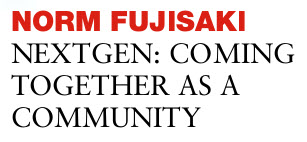Prioritizing Customers, Employees and Owners for Long Term Performance
 There are many perspectives to consider when creating a strategy for your business. Multiple perspectives should be used as your strategy evolves. Traditional approaches look at future markets, megatrends, and competition. One of the less common approaches looks at the needs and interests of customers, employees and owners — the three immediate stakeholders in a business. The conventional thinking is that the three sets of stakeholder needs should be first understood, and then balanced. My own observation is that it’s more common to find the greatest emphasis placed on the needs and interests of the owners. This is particularly true when financial objectives dominate the leadership’s attention and decision-making. Owners typically have a shorter time horizon, especially if they happen to be external shareholders or venture capitalists with a focus on maximizing their returns in the shortest possible time. Focus on earnings and cash flow in particular are sure signs of a limited, near term focus, whereas return on capital employed at least provides a longer term perspective. Many businesses pay a lot of attention to their customer’s needs, although a surprising number don’t do nearly enough. It’s a natural part of marketing and business development. You must know your customer’s needs, and what potential product or service offerings will be most valued. When you are lucky enough to win a customer’s business, you want to know how you’re doing and what could be done to increase the level of customer satisfaction, so that you can turn a customer into a loyal customer. You want to build a relationship with customers, so that the connection matures on an emotional level in addition to just a logical or economic level. The unfortunate and all too common situation is to neglect employee needs and interests. What are today’s knowledge workers looking for? What motivates them? Financial compensation, certainly. But, it’s so much more than that. I have found that knowledge workers have a great need to make a difference. They need to see the results of their work put to use and produce value for others in the real world. They need to feel that they are contributing to the betterment of society. They need to feel that they are making progress in terms of their profession, learning new things, building on their specialized capabilities, producing new ideas and products, and becoming more valued by their peers and bosses for what they uniquely know and are able to do. In today’s specialized world of knowledge workers, it’s possible for individual employees to develop world-class expertise and become a unique asset to the organization. Instead, particularly in large organizations, employees are treated as a fungible resource, interchangeable with any other employee, plug and play. Employees can come to feel like they are a mere cog in a wheel. They may feel like they are on a treadmill, just moving their legs, going nowhere with the same scenery day-in, day-out. If they have marketable skills, they’ll soon be gone. Leaders often extol the virtues of employees being the company’s most important asset. But, their actions and behaviors clearly indicate otherwise. There is an old management story about a newly appointed CEO at a reception being held in his honor. He engages one of the Board members, who asks him “Do you know what CEO stands for?” The CEO answers, “Of course, Chief Executive Officer.” The Board member smiles and says “CEO, more importantly, stands for customers, employees, and then owners — in that order of importance. Don’t ever forget that.” If it’s long term performance that you want, then these are words to heed.
There are many perspectives to consider when creating a strategy for your business. Multiple perspectives should be used as your strategy evolves. Traditional approaches look at future markets, megatrends, and competition. One of the less common approaches looks at the needs and interests of customers, employees and owners — the three immediate stakeholders in a business. The conventional thinking is that the three sets of stakeholder needs should be first understood, and then balanced. My own observation is that it’s more common to find the greatest emphasis placed on the needs and interests of the owners. This is particularly true when financial objectives dominate the leadership’s attention and decision-making. Owners typically have a shorter time horizon, especially if they happen to be external shareholders or venture capitalists with a focus on maximizing their returns in the shortest possible time. Focus on earnings and cash flow in particular are sure signs of a limited, near term focus, whereas return on capital employed at least provides a longer term perspective. Many businesses pay a lot of attention to their customer’s needs, although a surprising number don’t do nearly enough. It’s a natural part of marketing and business development. You must know your customer’s needs, and what potential product or service offerings will be most valued. When you are lucky enough to win a customer’s business, you want to know how you’re doing and what could be done to increase the level of customer satisfaction, so that you can turn a customer into a loyal customer. You want to build a relationship with customers, so that the connection matures on an emotional level in addition to just a logical or economic level. The unfortunate and all too common situation is to neglect employee needs and interests. What are today’s knowledge workers looking for? What motivates them? Financial compensation, certainly. But, it’s so much more than that. I have found that knowledge workers have a great need to make a difference. They need to see the results of their work put to use and produce value for others in the real world. They need to feel that they are contributing to the betterment of society. They need to feel that they are making progress in terms of their profession, learning new things, building on their specialized capabilities, producing new ideas and products, and becoming more valued by their peers and bosses for what they uniquely know and are able to do. In today’s specialized world of knowledge workers, it’s possible for individual employees to develop world-class expertise and become a unique asset to the organization. Instead, particularly in large organizations, employees are treated as a fungible resource, interchangeable with any other employee, plug and play. Employees can come to feel like they are a mere cog in a wheel. They may feel like they are on a treadmill, just moving their legs, going nowhere with the same scenery day-in, day-out. If they have marketable skills, they’ll soon be gone. Leaders often extol the virtues of employees being the company’s most important asset. But, their actions and behaviors clearly indicate otherwise. There is an old management story about a newly appointed CEO at a reception being held in his honor. He engages one of the Board members, who asks him “Do you know what CEO stands for?” The CEO answers, “Of course, Chief Executive Officer.” The Board member smiles and says “CEO, more importantly, stands for customers, employees, and then owners — in that order of importance. Don’t ever forget that.” If it’s long term performance that you want, then these are words to heed.



Connect
Connect with us on the following social media platforms.